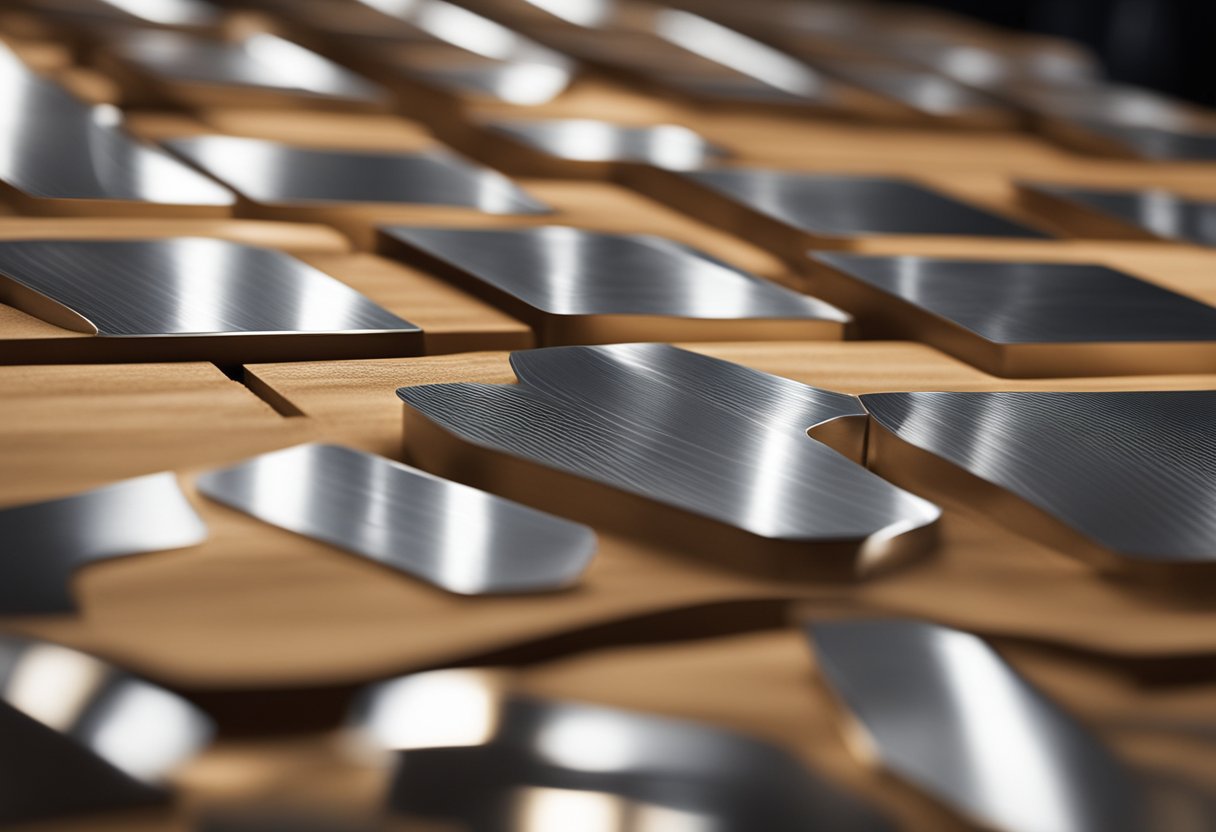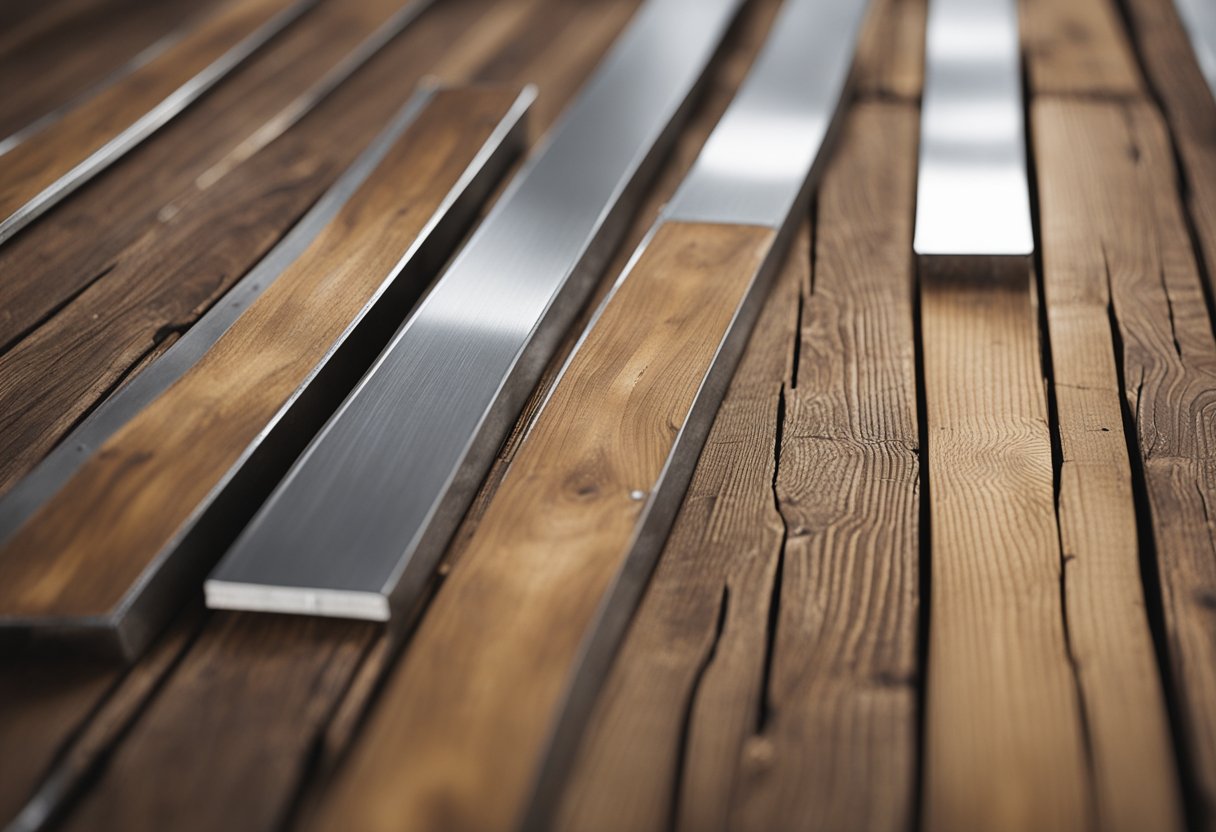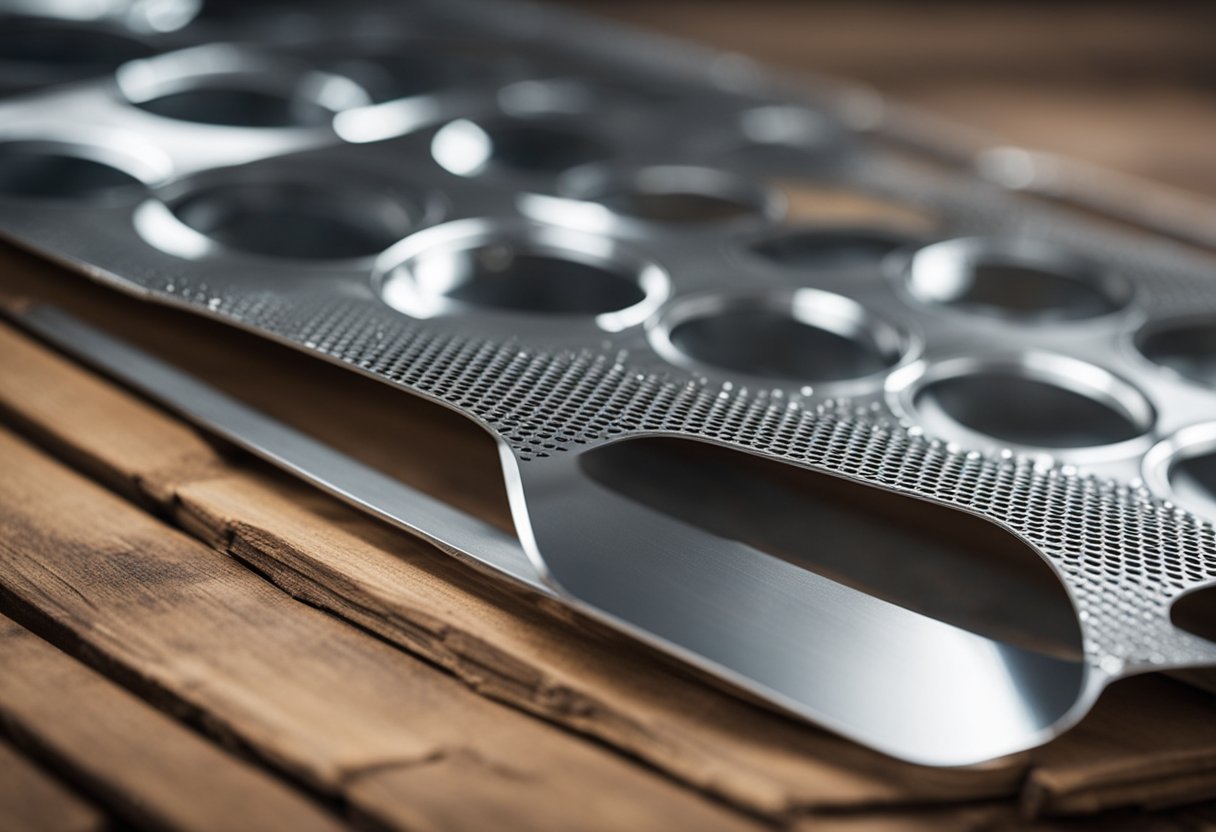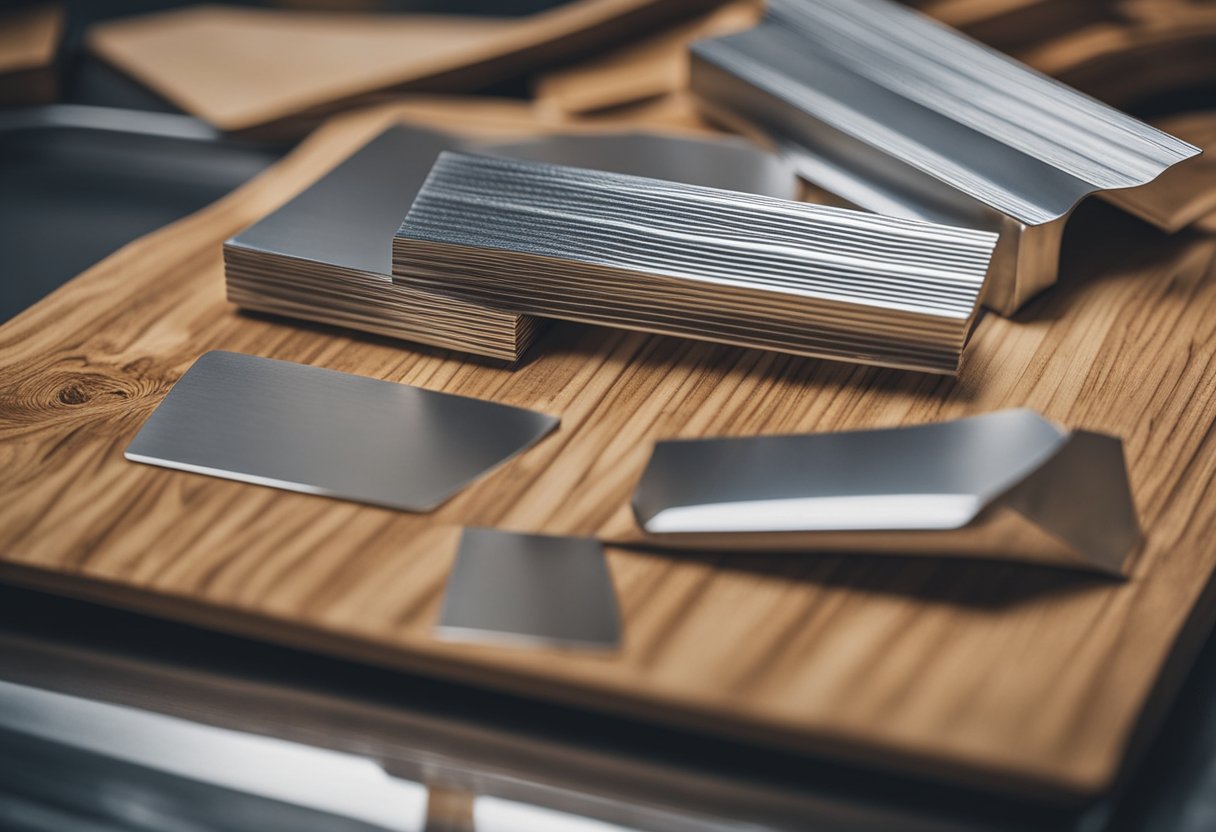I have extensive experience in woodworking and metalworking, and one question that I often get asked is how to glue aluminum to wood. The process of bonding aluminum to wood can be challenging, but with the right techniques and materials, it can be done successfully. In this article, I will provide a step-by-step guide on how to glue aluminum to wood, including the materials needed, types of adhesives, surface preparation, application techniques, bonding process, maintenance, and troubleshooting, and safety precautions.
Before we dive into the specifics of gluing aluminum to wood, it’s essential to understand the properties of both materials. Wood is a porous material that can absorb moisture, while aluminum is non-porous and has a smooth surface. These differences can make it difficult to create a strong bond between the two materials. However, with the right adhesive and surface preparation, it’s possible to create a durable and long-lasting bond.
When it comes to gluing aluminum to wood, there are several factors to consider, including the type of adhesive, surface preparation, and application techniques. By following the steps outlined in this article and using the right materials, you can successfully join aluminum to wood and create a strong and durable bond.
Key Takeaways
- Gluing aluminum to wood requires the right adhesive and surface preparation.
- Epoxy, polyurethane, and superglue are the top choices for bonding aluminum to wood.
- To ensure a successful bond, it’s essential to clean and prepare the surfaces properly before applying the adhesive.
Materials Needed
https://www.youtube.com/watch?v=XQ6THQM0Qg0&embed=true
When it comes to gluing aluminum to wood, it is important to have the right materials on hand for the job. Here are the materials that I recommend:
Adhesive
An adhesive is the most important material when it comes to gluing aluminum to wood. There are different types of adhesives that you can use, such as epoxy and polyurethane. Each of these adhesives has its own strengths and weaknesses, so it is important to choose the one that is best suited for your project.
Sandpaper
Before you start gluing, it is important to prepare the surfaces that you will be gluing. Sandpaper is a great tool for this. Sand the aluminum and wood surfaces with sandpaper to remove any dirt, rust, or paint. This will help the adhesive bond better to the surfaces.
Clamp
A clamp is a great tool for holding the aluminum and wood together while the adhesive dries. You can use a spring-loaded clamp or a spring clamp to hold the two surfaces together. Make sure to position the clamp in a way that applies even pressure to the surfaces.
Gloves
When working with adhesives, it is important to protect your hands. Wear gloves to avoid getting the adhesive on your skin. This will also help you avoid any allergic reactions to the adhesive.
Screw or Nails
If you are attaching the aluminum to the wood permanently, you can use screws or nails to hold the two surfaces together. Make sure to choose screws or nails that are appropriate for the thickness of the wood.
Pop Stick or Plastic Scraper
A pop stick or plastic scraper is a great tool for applying the adhesive to the surfaces. Use the stick or scraper to spread the adhesive evenly on the surfaces.
Syringe
If you are using a two-part adhesive, you can use a syringe to mix the two parts together and apply the adhesive to the surfaces. This will help you apply the adhesive more precisely.
Plywood
If you are gluing aluminum to wood for a larger project, you may want to use plywood as a base. This will provide a stable surface for the aluminum and wood to be glued to.
Steel Wool
After the adhesive has dried, you can use steel wool to remove any excess adhesive from the surfaces. This will help give the surfaces a smooth finish.
Types of Adhesives
When it comes to bonding aluminum to wood, there are several adhesive options available. The type of adhesive you choose will depend on the specific application and the strength and durability required. Some of the most popular adhesives for this purpose include epoxy, polyurethane, and cyanoacrylate.
Epoxy Adhesives
Epoxy adhesives are a popular choice for bonding aluminum to wood due to their incredible strength and versatility. These adhesives consist of two parts that must be mixed together before application. Once mixed, the adhesive cures into a hard, durable bond that can withstand a great deal of stress and strain. Epoxy adhesives are also resistant to water, chemicals, and heat, making them ideal for use in a variety of applications.
Polyurethane Adhesives
Polyurethane adhesives are another popular choice for bonding aluminum to wood. These adhesives offer excellent flexibility and resistance to moisture, making them ideal for use in environments where the bond may be exposed to water or other liquids. Polyurethane adhesives are also known for their strong bonding properties, making them ideal for use in construction applications.
Cyanoacrylate Adhesives
Cyanoacrylate adhesives, also known as superglues, are a popular choice for bonding aluminum to wood due to their fast curing time and strong bonding properties. These adhesives work by creating a chemical bond between the two materials, resulting in a bond that is both strong and durable. However, cyanoacrylate adhesives are not recommended for use in applications where the bond will be exposed to water or other liquids.
Construction Adhesives
Construction adhesives, such as Gorilla Glue and Liquid Nails, are also a popular choice for bonding aluminum to wood. These adhesives are known for their strong bonding properties and ability to bond a variety of materials, including metal and wood. However, it is important to note that not all construction adhesives are suitable for bonding aluminum to wood, so be sure to choose an adhesive that is specifically designed for this purpose.
In summary, when it comes to bonding aluminum to wood, there are several types of adhesives to choose from. Epoxy and polyurethane adhesives are ideal for applications where strength and durability are required, while cyanoacrylate adhesives are ideal for applications where a fast curing time is required. Construction adhesives are also a popular choice for bonding aluminum to wood, but it is important to choose an adhesive that is specifically designed for this purpose.
Surface Preparation
https://www.youtube.com/watch?v=6luslXQb6xc&embed=true
Before gluing aluminum to wood, it is crucial to prepare the surfaces properly to ensure a strong and durable bond. The following steps are essential for effective surface preparation:
Cleaning the Surfaces
The first step is to clean both the aluminum and wood surfaces thoroughly. Any dirt, dust, grease, or oil on the surfaces can weaken the bond. I recommend using a cleaning solution that is safe for both aluminum and wood. You can also use a mixture of water and vinegar or rubbing alcohol to clean the surfaces.
Sanding the Surfaces
Sanding the surfaces is crucial to achieving a strong bond. Sanding creates a roughened surface that allows the glue to grip firmly. I recommend using sandpaper with a grit of 250 to 500 to sand the wood surface lightly. Be careful not to sand too much, as this can affect the density of the wood. Sanding can also remove any wax or contaminants on the surface.
Removing Moisture
Moisture can weaken the bond between aluminum and wood. It is essential to remove any moisture from the surfaces before gluing them together. You can use a dry cloth to wipe the surfaces and let them air dry for a few hours.
Avoiding Metals
Metals can react with the glue and weaken the bond. It is crucial to avoid any metal screws or nails when gluing aluminum to wood. If you need to use screws, make sure they are made of plastic or wood.
Heat and UV
Heat and UV can also weaken the bond between aluminum and wood. It is essential to avoid exposing the surfaces to direct sunlight or high temperatures. If possible, glue the surfaces in a cool and dry place.
In summary, surface preparation is crucial for achieving a strong and durable bond between aluminum and wood. Cleaning the surfaces, sanding, removing moisture, avoiding metals, and avoiding heat and UV are essential steps to prepare the surfaces properly.
Application Techniques
https://www.youtube.com/watch?v=VAXhltlkKyg&embed=true
When it comes to attaching aluminum to wood, there are a variety of application techniques that can be used depending on the adhesive being used.
For adhesives like super glue or cyanoacrylate, it’s important to apply the adhesive evenly to both surfaces and clamp the pieces together for the duration of the curing process. This will help ensure maximum contact and an even distribution of bonding strength. The curing time for super glue is nearly instant, so there is very little time that is spent applying many pieces of aluminum to wood without needing to wait for a post-cure. It’s always best to allow super glue to complete its curing process as it sets up.
Polyurethane adhesives provide a flexible bond that is better suited for long-term applications and is excellent for pieces that bend, such as airplane wings or ship masts. To apply polyurethane adhesive, it is recommended to dispense the adhesive onto one surface and then clamp the pieces together. The curing process for polyurethane adhesive typically takes a full 24 hours to ensure final strength after curing.
Epoxy adhesives are renowned for their remarkable strength and excellent bonding capabilities. When using two-part epoxy adhesive, it’s important to mix the two parts together thoroughly before applying it to the surfaces. Once applied, it’s recommended to clamp the pieces together and wait for the curing process to finish. Epoxy adhesives require longer curing times than other adhesives, but they offer a reliable and durable bond.
In addition to using adhesives, mechanical fastening can also be used to attach aluminum to wood. This method involves drilling holes in the aluminum and wood and then using screws or bolts to secure the pieces together. This method is particularly useful for pieces that will be subject to structural flexing or other stresses.
Overall, the application technique used will depend on the adhesive being used, the strength required, and the curing process. By following the manufacturer’s instructions and using the appropriate application techniques, it is possible to achieve a strong and durable bond when attaching aluminum to wood.
Bonding Process
https://www.youtube.com/watch?v=Da8tsF2gKEI&embed=true
When it comes to bonding aluminum to wood, there are several adhesive options available. The most common adhesives used for this purpose are epoxy, polyurethane, and cyanoacrylate (also known as superglue). The choice of adhesive depends on the application, curing time, and the desired level of strength and flexibility.
Epoxy adhesive is a two-part adhesive that is known for its strength and durability. It is a popular choice for joining these two materials due to its ability to create a strong and rigid bond. Epoxy adhesive requires a curing process, which can take several hours to a day depending on the type of epoxy and the curing conditions.
Polyurethane adhesive is another option for bonding aluminum to wood. It creates a flexible bond that can withstand structural flexing. Polyurethane adhesive is also known for its long-term adhesion and durability. It is a good choice for applications where the bond will be exposed to harsh environmental conditions.
Cyanoacrylate adhesive, also known as superglue, is a fast-curing adhesive that creates a strong bond between metal and wood. It is a good choice for applications where a quick fix is needed. However, cyanoacrylate adhesive is not as durable as epoxy or polyurethane adhesive and is not recommended for long-term applications.
Regardless of the adhesive chosen, it is important to prepare the surfaces properly before bonding. The surfaces should be clean, dry, and free of any contaminants that may affect the bond. Clamping the aluminum and wood together during the curing process can also help to create a tighter bond.
In conclusion, there are several types of adhesives available for bonding aluminum to wood. Epoxy, polyurethane, and cyanoacrylate adhesive are some of the most popular options. The choice of adhesive depends on the application, curing time, and the desired level of strength and flexibility. Proper surface preparation and clamping during the curing process can help to create a strong and durable bond.
Maintenance and Troubleshooting
https://www.youtube.com/watch?v=4PNRpLVoynA&embed=true
As with any adhesive bonding process, maintenance is essential for ensuring the long-term adhesion of aluminum to wood. Regular cleaning and inspection of the bond can help identify potential issues before they become major problems.
When working with adhesives, it’s important to follow the manufacturer’s instructions carefully. This includes proper application techniques, curing times, and temperature requirements. Using the wrong adhesive or failing to follow the instructions can result in a weak bond that may fail over time.
If you encounter problems with the bond, there are several troubleshooting steps you can take. First, check to make sure that both surfaces are clean and free of any debris or oils that may interfere with the bond. If necessary, clean the surfaces with a solvent or degreaser and allow them to dry completely.
If the bond is still weak, try using a different adhesive. Polyurethane adhesives are known for their strength and durability, while cyanoacrylate adhesives provide a fast, strong bond. Epoxy adhesives are also a popular choice for their strength and durability.
In some cases, the bond may fail due to environmental factors such as temperature or humidity. If this is the case, try using an adhesive that is specifically designed for use in the given conditions. For example, some adhesives are designed to work in high-temperature environments, while others are better suited for outdoor use.
Overall, by following proper maintenance procedures and troubleshooting techniques, you can ensure a strong and durable bond between aluminum and wood.
Safety Precautions
When gluing aluminum to wood, it is important to take safety precautions to avoid accidents. Here are some safety measures to observe:
Wear Protective Gear
Before you start working with adhesives, ensure that you have the right protective gear. This includes gloves, safety glasses, and a respirator. Some adhesives release fumes that can be harmful to your health, so it is important to protect yourself.
Work in a Well-Ventilated Area
When using adhesives, make sure you work in a well-ventilated area. This will help to prevent the buildup of fumes that can be harmful to your health. If you are working indoors, open windows and doors to allow fresh air to circulate.
Follow the Manufacturer’s Instructions
Different adhesives have different application methods, so it is important to read and follow the manufacturer’s instructions carefully. This will ensure that you apply the adhesive correctly and achieve the desired results.
Use the Right Adhesive
Choosing the right adhesive is crucial when gluing aluminum to wood. Epoxy adhesives and polyurethane glues are popular choices due to their strength and durability. However, cyanoacrylate and acrylic adhesives can also be used for a flexible bond. Make sure you select the right adhesive for your project.
Prepare the Surfaces
Before applying the adhesive, ensure that both surfaces are clean and dry. Remove any dirt, oil, or grease using a solvent such as acetone or isopropyl alcohol. Sanding the surfaces can also help to create a stronger bond.
Handle Adhesives with Care
Adhesives can be dangerous if mishandled. Keep them away from children and pets, and avoid contact with your skin and eyes. If you accidentally get adhesive on your skin, wash it off with soap and water immediately. If it gets in your eyes, seek medical attention right away.
By following these safety precautions, you can ensure that your project is completed safely and successfully.
Frequently Asked Questions
What is the strongest glue for aluminum and wood?
The strongest glue for bonding aluminum and wood is epoxy. Epoxy is a two-part adhesive that creates a strong bond and can be used for a variety of materials. It is important to ensure that the surfaces are clean and dry before applying the epoxy. Once the epoxy is applied, it should be left to cure for the recommended time before handling.
How to attach aluminum sheets to wood without screws?
One way to attach aluminum sheets to wood without screws is to use an adhesive. There are a few different types of adhesive that can be used, including epoxy, construction adhesive, and contact cement. It is important to choose an adhesive that is suitable for both aluminum and wood. The surfaces should be clean and dry before applying the adhesive, and pressure should be applied to ensure a strong bond.
Which glue is recommended for bonding aluminum to wood?
The type of glue that is recommended for bonding aluminum to wood depends on the specific project and materials being used. Epoxy, construction adhesive, and contact cement are all suitable options. It is important to choose an adhesive that is designed for both aluminum and wood, and to ensure that the surfaces are clean and dry before applying the adhesive.
Can liquid nails be used to bond aluminum to wood?
Liquid Nails is a brand of construction adhesive that can be used to bond aluminum to wood. However, it is important to ensure that the specific product is suitable for both aluminum and wood before using it. The surfaces should be clean and dry before applying the adhesive, and pressure should be applied to ensure a strong bond.
What is the best way to glue sheet metal to wood?
The best way to glue sheet metal to wood is to use an adhesive that is suitable for both materials, such as epoxy or construction adhesive. The surfaces should be clean and dry before applying the adhesive, and pressure should be applied to ensure a strong bond. It is also important to ensure that the adhesive is applied evenly to avoid any gaps or air pockets.
Is vegetable glue suitable for attaching aluminum to wood?
Vegetable glue, also known as hide glue, is not suitable for attaching aluminum to wood. This type of glue is made from animal collagen and is designed for use with wood and other porous materials. It is not suitable for use with non-porous materials such as aluminum.

Hi, I’m Sal Muller of Tooltrip.com. My DIY experience led me to understand essential power tools for home projects. Tooltrip.com guides enthusiasts and professionals in choosing right tools for any job. I provide concise top tool reviews for easier, efficient DIY.





